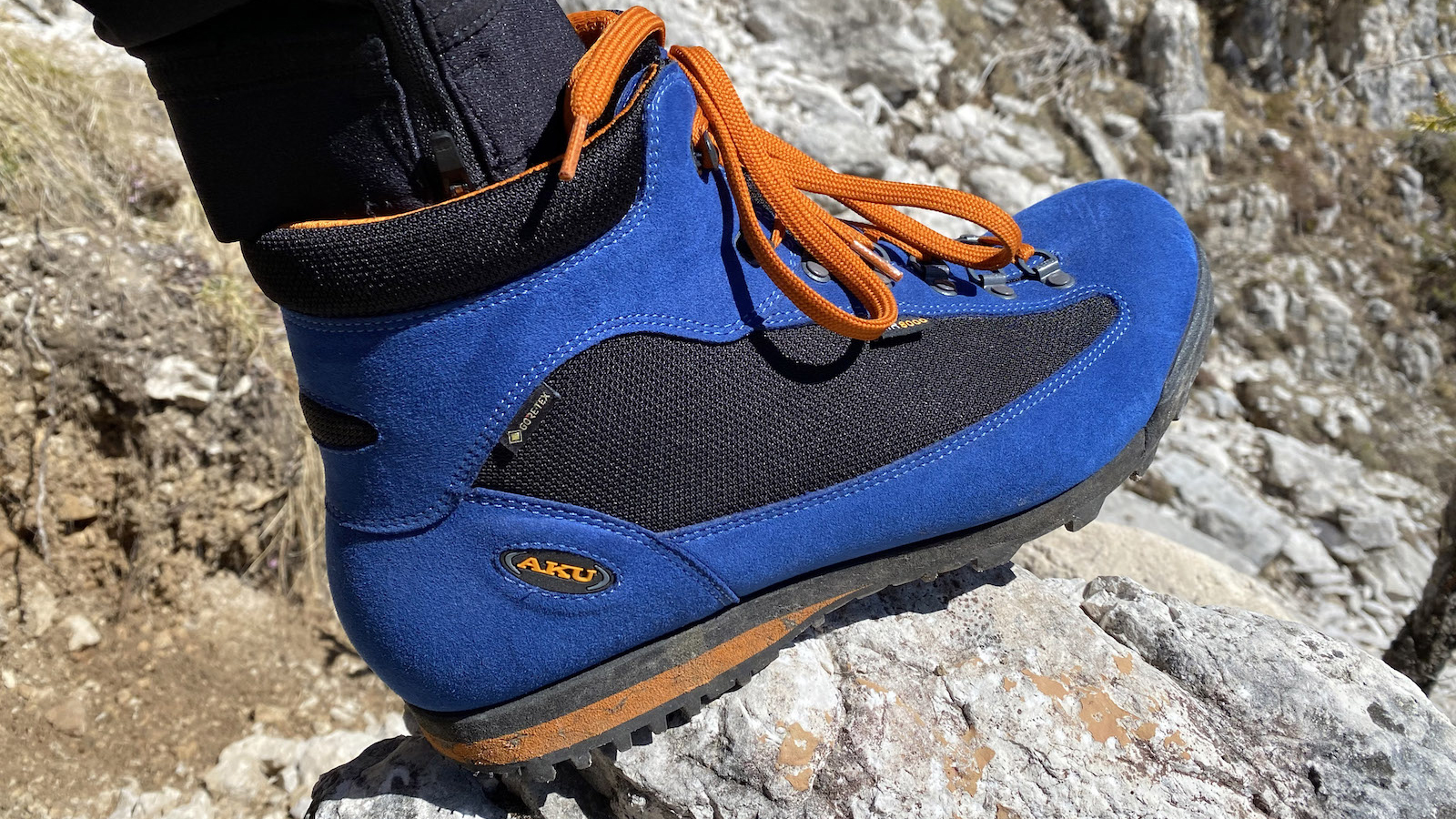Advnture Verdict
Soft-feeling and comfortable, the Slope is a classy boot with a timeless aesthetic. There’s quality throughout, from the carefully considered hiker's fit, the grippy Vibram Erica Everest sole and the environmentally conscious materials. It’s not one for speed hikers or scramblers but advocates of both classic hiking boots and sustainability will approve.
Pros
- +
Sustainable manufacture
- +
Gore-Tex waterproofing
- +
Breathable Air 8000 tech
- +
Vegan-friendly
- +
Soft-feeling and comfortable
- +
Relatively lightweight
Cons
- -
Premium price
- -
Not as protective or stable as some
You can trust Advnture
Despite the clear blue skies and sunshine, the temperature was hovering around freezing as we set out from La Ritonda, our mountain refuge style accommodation beneath the Pale di San Martino mountains of the Italian Dolomites. Above us, dreamlike peaks daggered towards the blue, speckled with late-season snow. Magical.
Our route would head up towards them, taking us to Rifugio Treviso, high above the valley. Our guide was Peter Moser, an Italian alpinist and subject of a 2023 film, Pionieri, in which he conquers the great peaks of this stunning region in a single outing, wearing Aku’s Rock DFS GTX approach shoes and paying tribute to the original climbing pioneers.
Fortunately, considering my very average climbing ability, we’d be sticking to the trails rather than scaling any limestone faces. For the outing, we were testing Aku’s new Slope V-Light GTX hiking shoes.
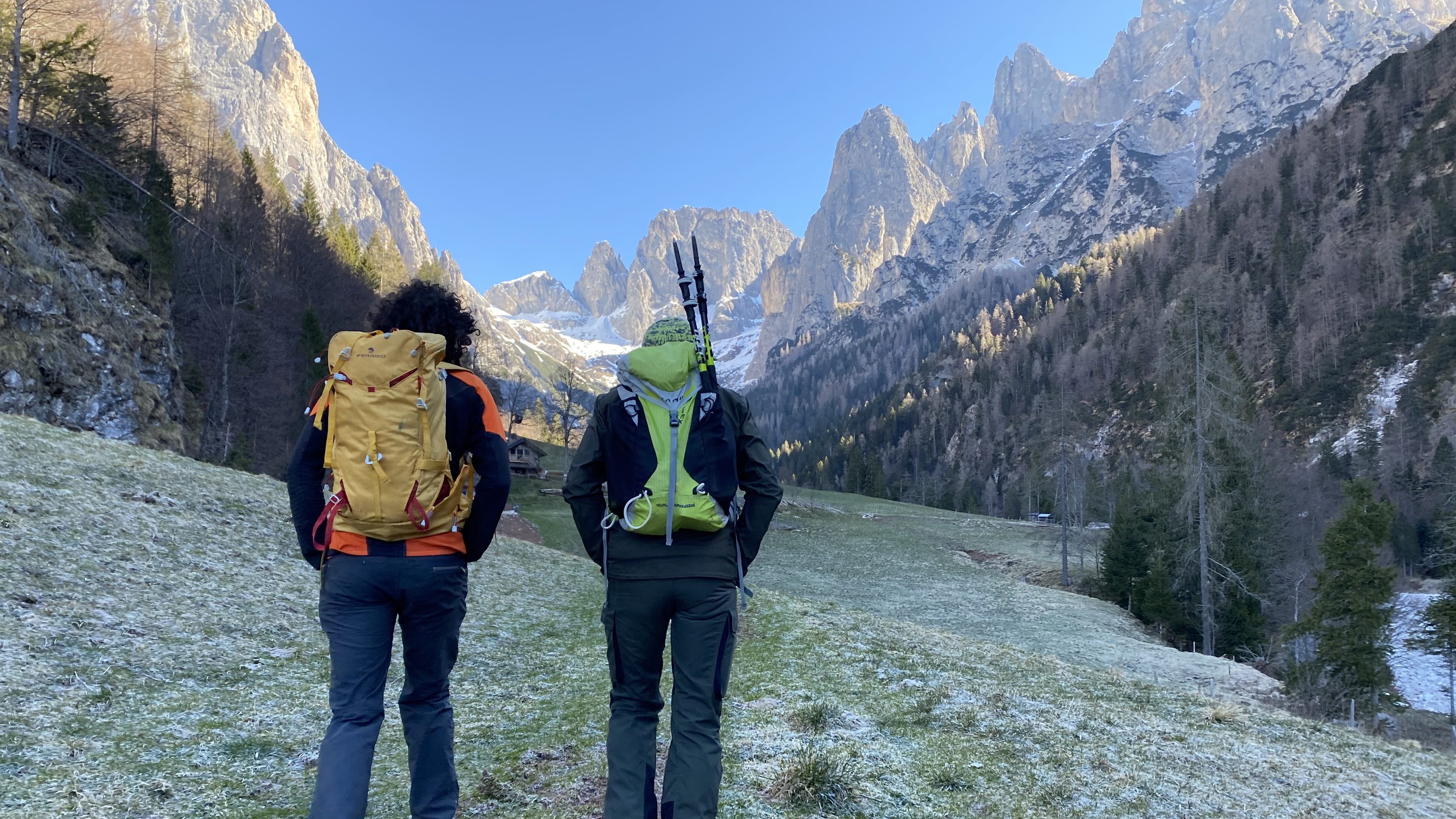
The Slope is Aku’s classic hiking boot, designed by founder Galliano Bordin in the 1990s as a colorful and light trekking shoe. It was the first Italian boot to feature Gore-Tex technology and has been a big hit, particularly on the European continent, ever since. As well as its pioneering use of Gore-Tex, the boot was renowned for its soft feel and comfort, a stark contrast to a lot of stiff boots around in those days.
The V-Light represents the next chapter in both the Slope’s design and the brand’s evolution towards a more sustainable future, with the usual leather replaced by a recycled microfiber upper, a lighter-than-leather synthetic that blends polyester and polyamide.
Aku Slope V-Light GTX: first impressions
With its bright blue fabric and orange laces, you’d get away with wearing the Slope among Dutch fans at the World Cup – they’re certainly not dull. Striking color scheme aside, I was immediately taken with how light and soft the Slopes feel. At 510g (18oz), they’re at the less weighty end of the boot spectrum and the upper feels soft and flexible throughout. The sole rises to create protection at the toes, though there’s no wrap-around rand here for additional shielding.
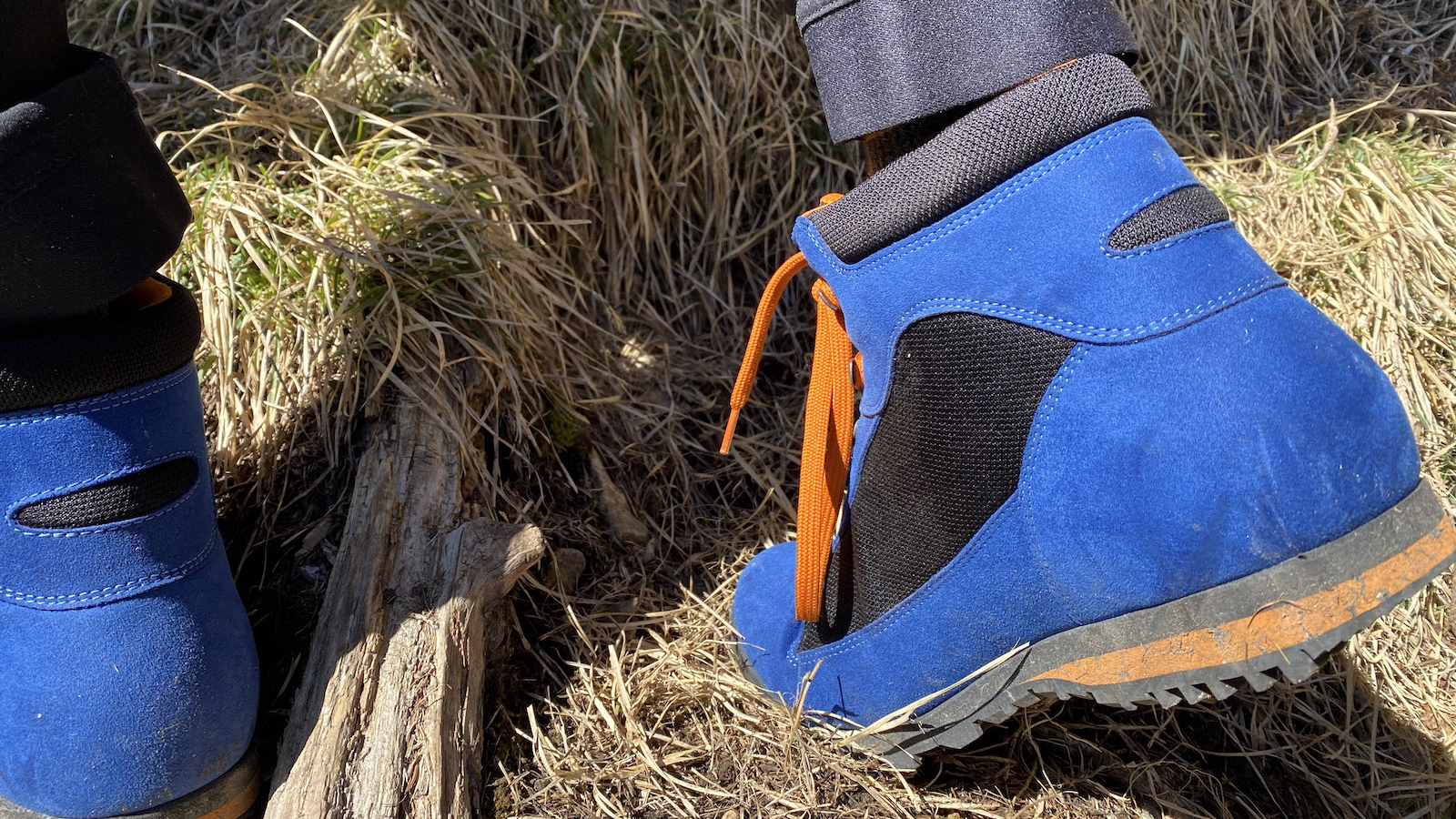
It strikes me that these are boots designed for comfort on the trails, rather than robust protective shields for more technical mountain hiking and scrambling. Aku say that they’re ‘perfect for day treks on easy/medium difficulty terrain’. So, it seems we are in agreement.
As mentioned, sustainability is at the heart of the Slope V-Light. Aku are aware that the meat industry is one of the biggest contributing factors to the climate emergency and that leather is a by-product . The Slope V-Light is one of their products that uses a leather alternative, instead deploying a microfiber that’s 100% recycled. The V in the name stands for Vegan.
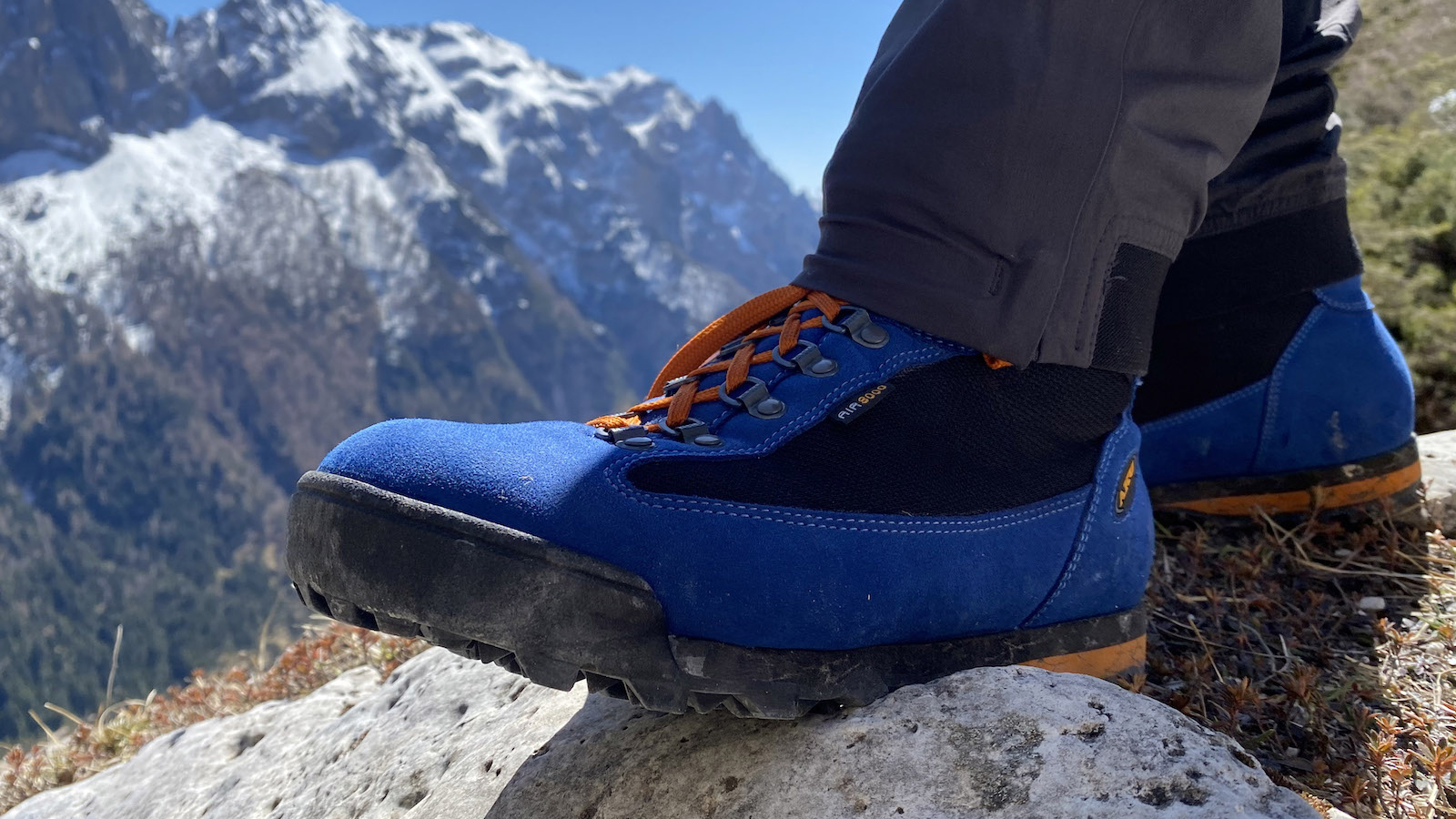
The boot also features 99% recycled yarns in the laminate for the Gore-Tex lining and in the recycled polyester laces, while the R-EVA midsole contains 20% recycled materials too.
List price: £240 (UK) / €209.90 (EU)
Gender: Unisex
Weight (per boot): 510g / 18oz
Materials: Microfibre re-pet recycled 1.8mm + air 8000, Gore-Tex performance comfort recycled lining, Double density die cut EVA midsole, Vibram Erica Eversest outsole
Colors: Blue/Orange, Earth Brown/Lime (EU only)
Compatibility: hiking all year round but not compatible with crampons
All of Aku’s boots are made in factories in Italy, Romania and Serbia and the brand proudly share the origin of their boots’ components on their website. The reason they’re proud of this is that most of the raw materials and components come from Italy and, in the case of the Slope, a few bits and bobs from Germany and Romania. From an environmental point of view, this is important, as it keeps the carbon footprint of the supply chain down. Aku trace how each component is transported to their factories, so they have total supply chain visibility and can work out the impact of the process on the environment.
If you know how hiking boots are made, you’ll know everything starts with the last. The not-so-closely-guarded secret behind Aku’s primary last is the way the forefoot and heel are oppositely inclined, meaning the heel is angled one way and the forefoot the other. This design promotes dynamic action, supporting the heel and providing propulsion from the forefoot when hiking on mountain trails and uneven ground.
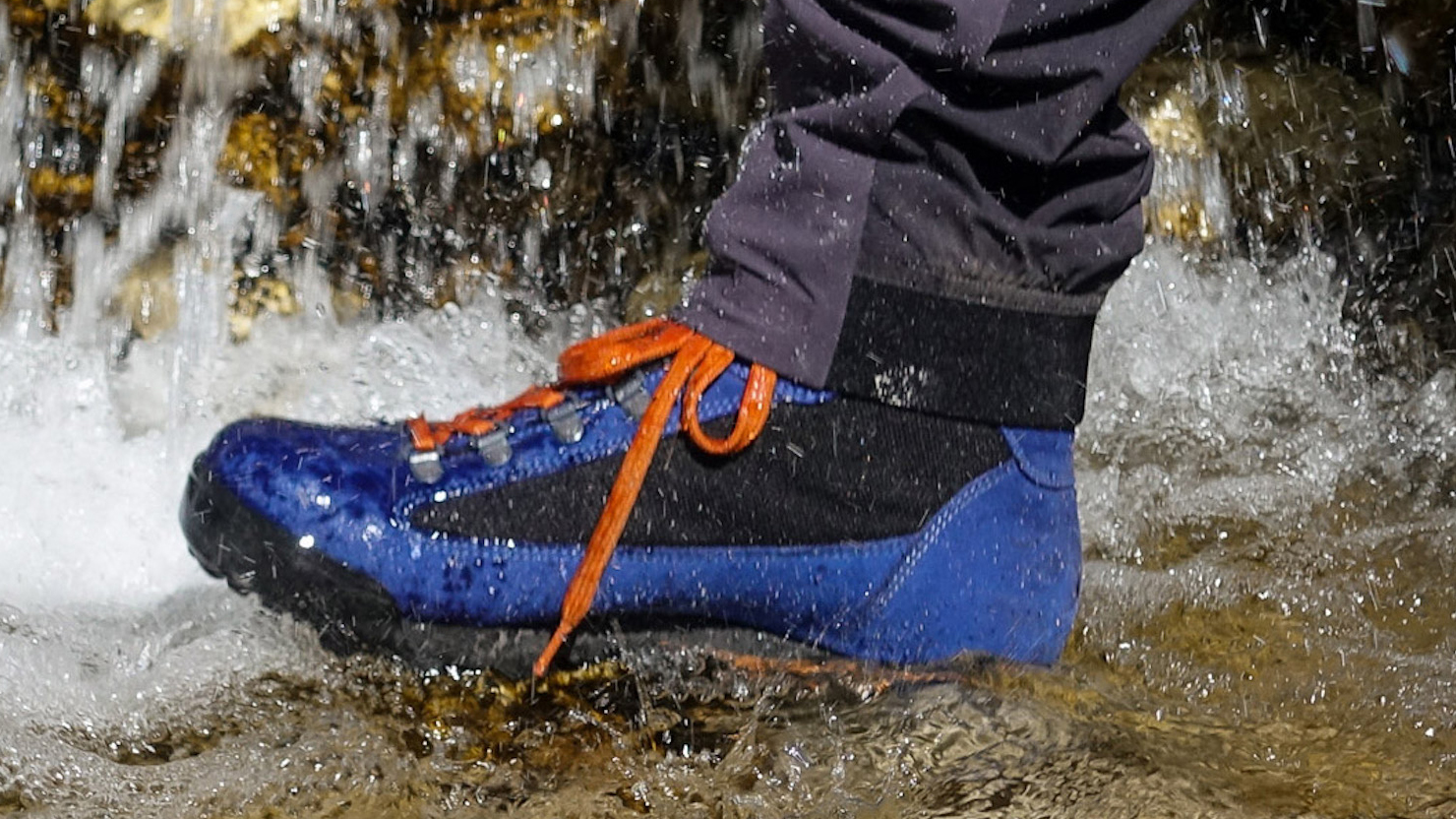
The Slope features a Gore-Tex membrane with a remarkable 1.4 million pores per square centimeter. This effectively shields feet from the drink but, as we’ve come to expect from Gore-Tex, not at the expense of letting moisture escape effectively.
However, Gore-Tex is only as good as the binding that holds it to the rest of the upper, which is where Aku’s Air 8000 technology comes in, the same tech as in Aku’s excellent Trekker Lite III GTX hiking boots. The glue Aku use here is applied in a lattice-like structure, preserving breathability and working with the Gore-Tex membrane. This technology was pioneered on the original Slope in the heady days of the 1990s.
As tongue’s go, the Slope’s is one of the plusher ones we’ve come across and the whole thing is integrated into the upper, creating a consistent barrier against trail debris and water. The lacing system enables a precise fit. It comprises 5 D-ring eyelets for the midfoot and two hooked eyelets for the ankle and integrated tongue.
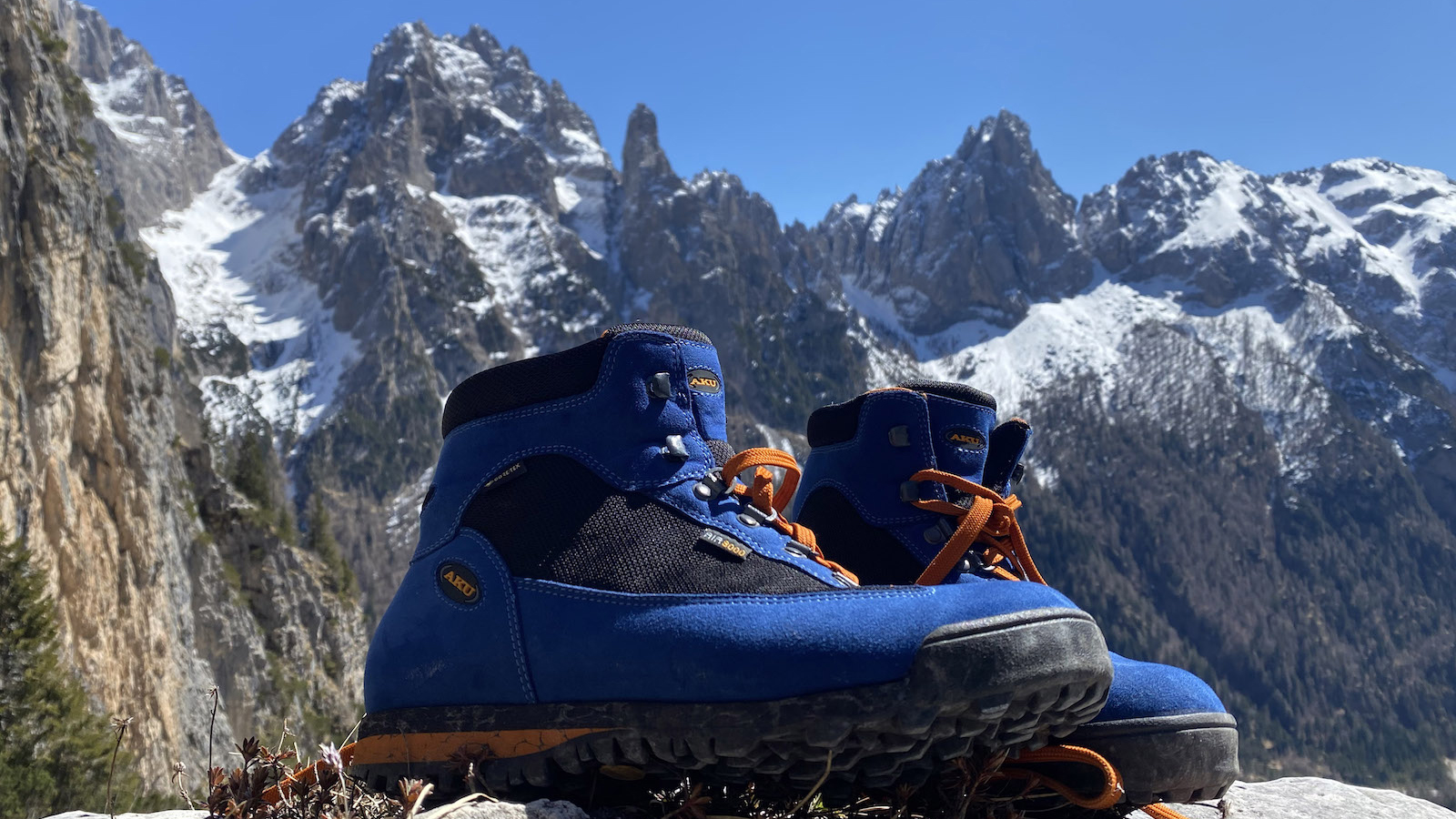
Aku have a long-standing relationship with fellow Italian giants Vibram and all their trekking and mountaineering footwear feature the iconic yellow octagon. In this case, it’s the Erica Everest compound and a densely packed system of deep lugs – teeth for tackling muddy terrain. There’s no flat climbing zone at the toe end, as seen on some hiking shoes and on approach shoes, though there’s still enough surface area on display to guarantee a decent hold when edging.
Aku Slope V-Light GTX: on the trails
As we hiked through superlative alpine meadows and up onto rougher, rockier terrain, I found the Slopes were comfortable throughout, with little of the clunkiness so often associated with hiking boots. The Vibram sole felt reassuringly rigid at the heel and it gives the usual flex for this kind of boot towards the forefoot.
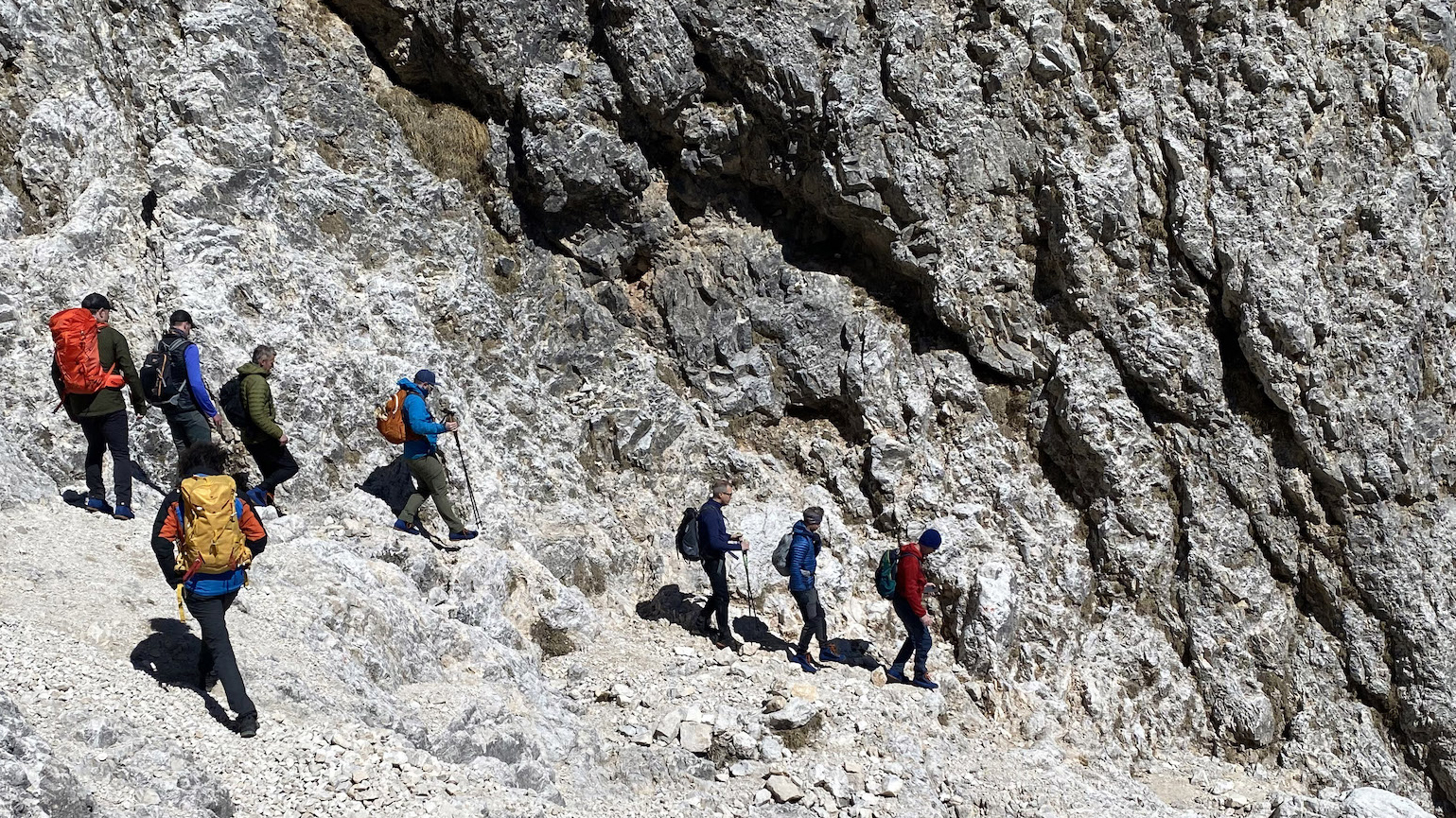
Once tightened up, they fit nicely. My heel didn’t feel quite as locked in as with some hiking footwear but I didn’t encounter any issues in Italy, nor have I since when wearing them on hikes in the mountainous parts of the UK. There’s a nice amount of toe room – not too little to feel restricted and not too much to remove confidence when edging.
They’re not particularly heavy either for a high cut boot, weighing in at just over one kilogram (36oz) per pair. Aku’s decision to ditch suede in favor of recycled microfiber means that they are 30% lighter than they would have been. A win for speed, as well as sustainability.
Perhaps it was this lack of weight that meant, after a long day with plenty of elevation gain, my feet felt relatively fresh, which contrasts with the kind of fatigue I’d often get around the ankle and midfoot with a more rugged, heavier boot. While they’re not the most protective, I found they coped well with the rockier sections and, again, my feet had none of the aches that occur when wearing more minimalist footwear on such terrain.
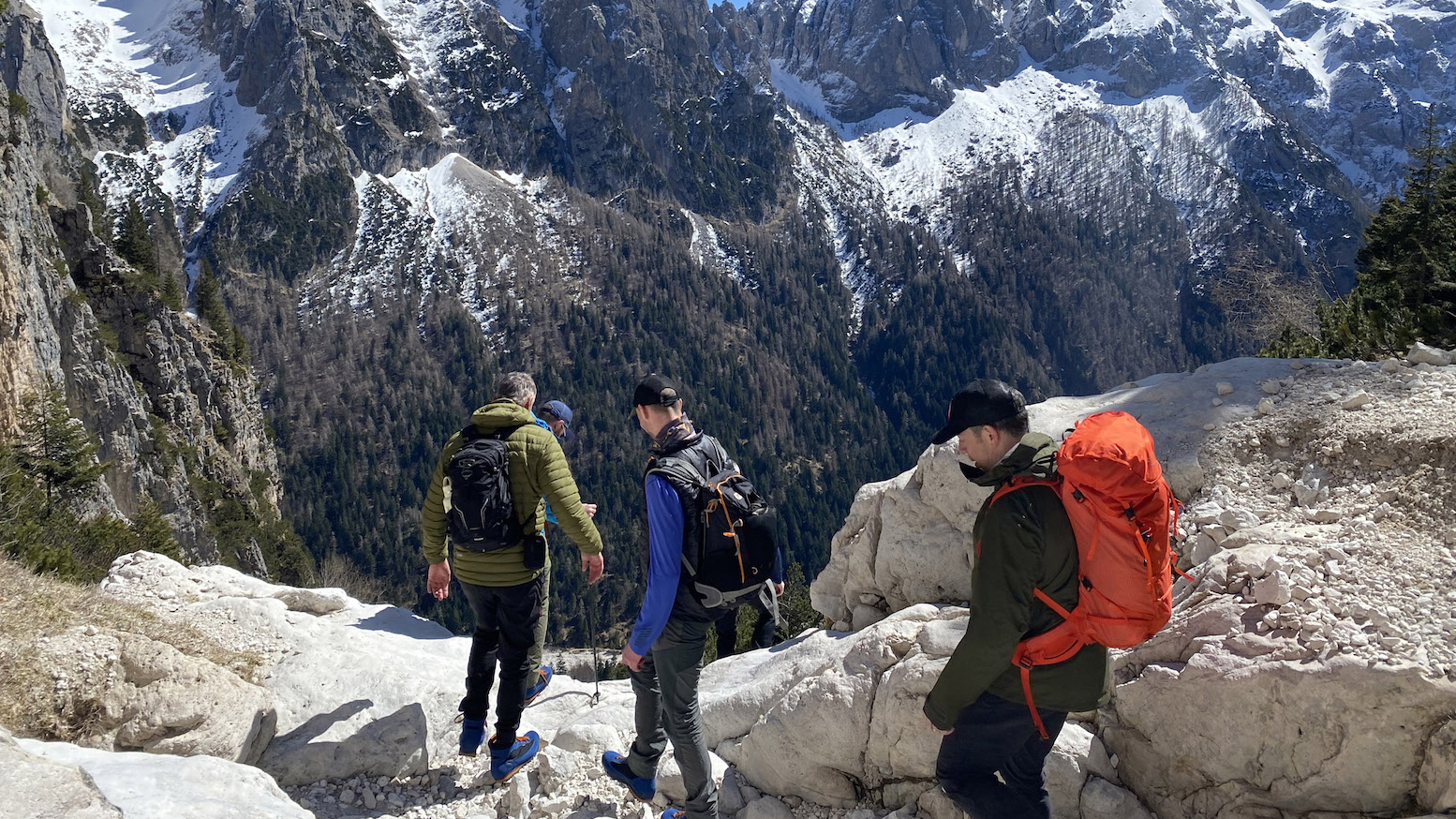
Wet conditions are no problem for the Slope, thanks to a combination of its internal Gore-Tex bootie and its high cut. I’ve dunked them in fast-flowing streams and braved Lakeland drizzle and found my feet emerging dry every time.
The outsole's lugs hold wet, muddy ground very well indeed and they’re not bad on rock either. Whether scrambling on beautiful Dolomite limestone or romping up rhyolite in the UK, the sole held in steadfast fashion, enabling me to smear up angled slabs and edge across ledges. While not as capable on this kind of terrain as the Vibram Megagrip seen on Aku’s Rocket DFS GTX hiking shoes, the Slope is perfectly capable on low-grade scrambles.
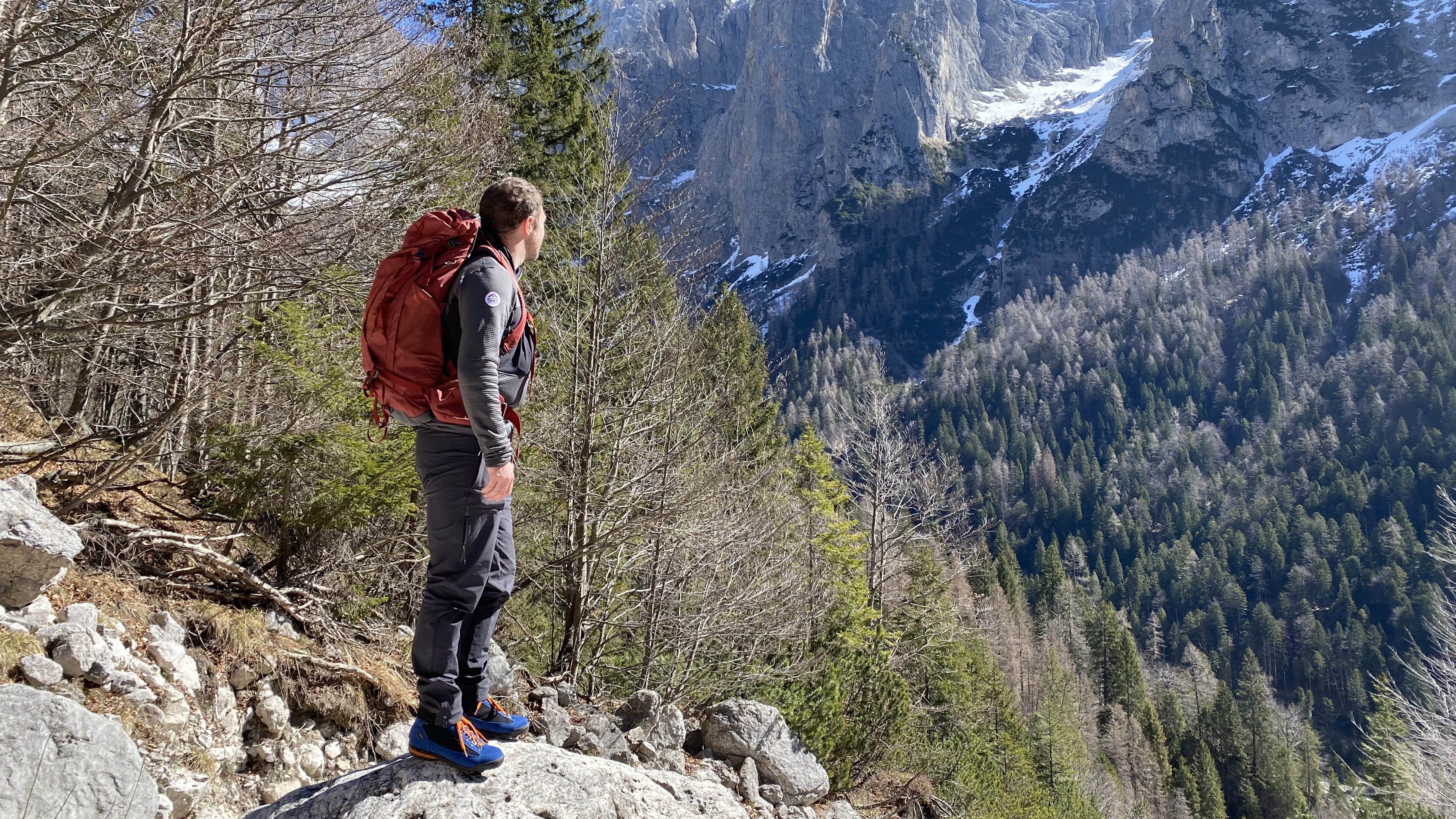
I’ve tested the Slope spring, summer and fall but have yet to take them into a wintry domain. I’d suggest that, due to the flexibility in the outsole and the fairly meagre protective reinforcements, they’d be found wanting on frozen terrain. However, for easier winter walking below the snow line or even on unthreatening snowy terrain, I imagine they’d more than hold their own.
In warmer conditions, my preference is always for something lighter than a hiking boot, as I like to move fast on the trails. The Slope, with its nice amount of cushioning and high cut, also runs a bit warm for summery jaunts.
Alex is a freelance adventure writer and mountain leader with an insatiable passion for the mountains. A Cumbrian born and bred, his native English Lake District has a special place in his heart, though he is at least equally happy in North Wales, the Scottish Highlands or the European Alps. Through his hiking, mountaineering, climbing and trail running adventures, Alex aims to inspire others to get outdoors. He's the former President of the London Mountaineering Club, is training to become a winter mountain leader, looking to finally finish bagging all the Wainwright fells of the Lake District and is always keen to head to the 4,000-meter peaks of the Alps. www.alexfoxfield.com
